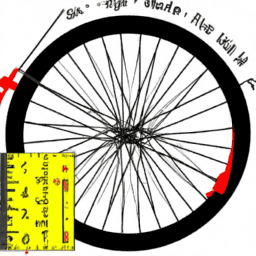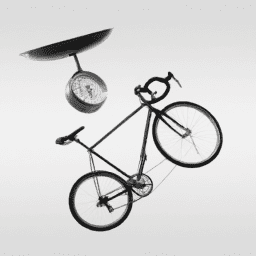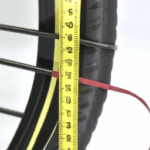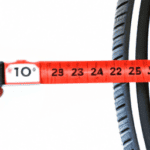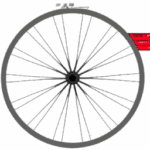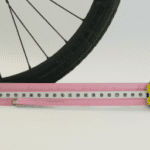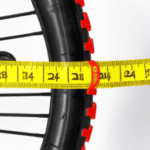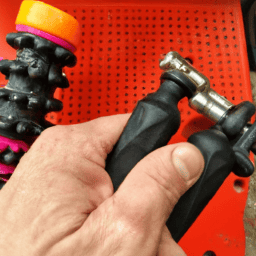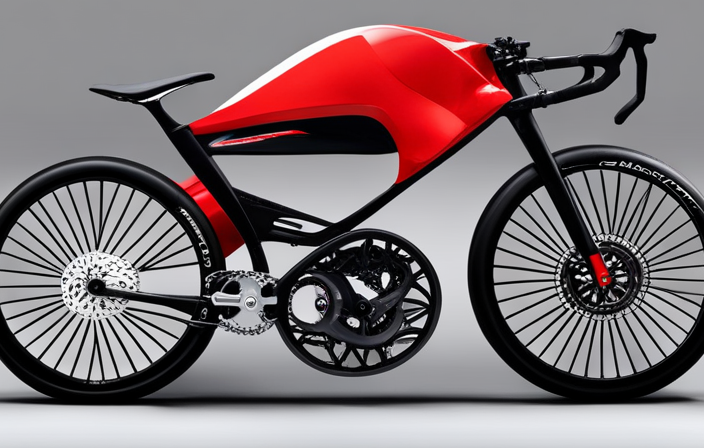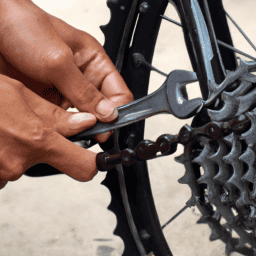As a cyclist, you’re aware that keeping your bicycle in top condition is crucial for a seamless and secure journey. A key component of bicycle upkeep involves precise measurement of your bike’s tire. This step gains critical importance when it’s time to change your tires because selecting an incorrect size can lead to problems with handling, tire wear, and potentially even accidents.
In this article, we’ll guide you through the steps needed to measure your bicycle tire correctly.
Before you begin measuring your bicycle tire, it’s essential to understand the different measurements used for bicycle tires. Tires come in different sizes, and each size is made up of three measurements: the diameter, the width, and the bead seat diameter. These measurements can be found on the side of your tire and are usually expressed in millimeters.
Understanding these measurements is crucial to ensure that you choose the right replacement tire for your bike. With that in mind, let’s dive into the steps needed to measure your bicycle tire accurately.
Key Takeaways
- Accurate measurement is crucial for choosing the right replacement tire.
- Tire compatibility with the bike’s frame and rim should be checked before purchasing a new tire.
- Tire width, pressure, and diameter affect handling, stability, and ride comfort.
- Proper inflation is crucial for a safe and comfortable ride.
Understand the Different Measurements Used for Bicycle Tires
To measure your bicycle tire, you’ll need to understand the different measurements used, like the width and diameter. The width of your tire is usually measured in millimeters and is found on the sidewall of the tire.
The diameter of your tire is also measured in millimeters and is the distance from one end of the tire to the other, across the center of the tire.
Another important measurement to consider is the aspect ratio, which is the ratio of the tire’s height to its width. This is also found on the sidewall of the tire, usually as a percentage.
Additionally, you’ll want to check the recommended tire pressure for your specific tire, which is also listed on the sidewall.
Understanding these measurements will help ensure that you choose the correct tire size for your bike and maintain the proper tire pressure for optimal performance.
Now, in order to measure your tire, you’ll need to gather the necessary tools.
Gather the Necessary Tools
Before starting, you’ll need a few items to get an accurate reading on your wheel’s pressure. First, you’ll need a tire pressure gauge. This tool will allow you to measure the amount of air pressure in your tire. Proper inflation is crucial for a safe and comfortable ride, so it’s important to have an accurate gauge.
Second, you’ll need a tire tread depth gauge. This tool will help you determine if your tire has common wear patterns or if it’s time to replace it.
When it comes to measuring your bicycle tire, having the right tools is essential. By using a tire pressure gauge and a tire tread depth gauge, you can ensure that your tire is properly inflated and in good condition.
Once you have gathered these tools, you can move on to measuring the tire diameter.
Measure the Tire Diameter
Now, you’ll need to get up close to your wheel and wrap a measuring tape around the outside edge to determine the diameter. This will help you figure out what size tires you need to purchase for your bike.
To accurately measure the tire diameter, follow these steps:
-
Calculate circumference: First, measure the distance around the tire by wrapping the measuring tape around the outside edge. Make sure the tape is snug against the tire but not so tight that it distorts the shape of the tire. Take note of the measurement in inches or centimeters.
-
Divide by pi: To get the tire diameter, divide the circumference by pi (3.14). This will give you the diameter in inches or centimeters, depending on what units you used to measure the circumference.
-
Convert measurements: If you measured the circumference in inches, make sure to convert the diameter to inches as well. Similarly, if you measured the circumference in centimeters, convert the diameter to centimeters as well.
Once you’ve determined the diameter of your bike tire, you can move on to measuring the width of the tire. This will help you find tires that are the right size and fit for your bike.
Measure the Tire Width
Get a grip on your ride by discovering the girth of your trusty wheel. To measure the tire width accurately, locate the widest point of the tire and measure the distance across it using a ruler or tape measure. Make sure to take the measurement at the tire’s widest point, which is typically at the center of the tire tread.
Measuring accuracy is critical when determining the correct tire width. If the tire is too narrow, it can cause instability and affect the handling of the bike. Conversely, if the tire is too wide, it can increase the rolling resistance, making it harder to pedal.
Additionally, tire pressure can also affect the width of the tire. Make sure to measure the tire width when the tire is fully inflated to the recommended pressure.
Once you have measured the tire width, you can check compatibility and choose a replacement tire that matches the width of your current tire.
Check Compatibility and Choose a Replacement Tire
Before choosing a replacement tire, it’s important to check the compatibility of your bike’s frame and rim. Consider riding conditions and the type of tire you need. Whether it’s for smooth roads or off-road terrain, you want to make sure it fits your needs. Once you’ve determined these factors, you can choose a replacement tire that will provide the best performance and safety for your cycling needs.
(Note: Double new line after each complete sentence for logical grouping)
Check Frame and Rim Compatibility
Make sure your frame and rim are compatible by checking the specifications and measurements before purchasing a new tire. Compatibility concerns are crucial as the wrong tire can cause problems with the overall performance of your bike. Here are some things to consider when checking for compatibility:
-
Check the tire width: The tire width should match the width of your rim. If the tire is too narrow or too wide, it can cause problems with handling and stability.
-
Check the bead type: There are two types of beads – wire and folding. Make sure the bead type matches the rim type.
-
Check the tire pressure considerations: The tire pressure should match the recommended pressure for your bike. A tire with a higher pressure can cause a harsh ride, while a tire with lower pressure can cause pinch flats.
-
Check the tire diameter: The tire diameter should match the rim diameter. Using a tire with a different diameter can cause problems with handling and stability.
-
Check for clearance: Make sure there is enough clearance between the tire and the frame or fork. A tire that is too big can cause rubbing and damage to the frame.
Considering the above factors will ensure that the new tire fits properly and performs optimally. It’s also important to consider riding conditions and tire type, which we’ll discuss in the next section.
Consider Riding Conditions and Tire Type
When you ride your bike, you should consider the conditions you’ll be riding in and the type of tire you need. For example, if you’ll be riding on rough or uneven terrain, a tire with more tread will be more appropriate than one with less.
You’ll also want to choose appropriate tire pressure based on the conditions you’ll be riding in, as this can greatly impact your tire’s performance and safety. Understanding tire tread options is important when choosing the right tire for your needs.
Tread patterns can vary widely, from slick tires designed for smooth surfaces and racing to knobby tires that provide better traction on dirt and gravel roads. It’s important to consider your riding style and preferences, as well as the conditions you’ll be riding in when choosing the right tire.
With these factors in mind, you’ll be able to choose a replacement tire that will help you ride safely and confidently.
Choose a Replacement Tire
To find the perfect replacement tire for you, you’ll want to consider factors like your riding style and the terrain you’ll be exploring. Start by measuring your current tire’s size and noting the type of tire you have.
This will help you search for a replacement tire that fits your bike properly. Make sure to double-check the fitting process before purchasing a new tire to avoid any issues when installing it.
When it comes to choosing a replacement tire, there are a variety of brand options to choose from. Some popular brands include Continental, Schwalbe, and Maxxis. Each brand offers different tire models with unique features designed for various riding styles and terrains.
Research each brand and their tire models to determine which one will best suit your needs. Remember to also keep in mind your budget and any specific features you may need, such as puncture resistance or increased grip.
Frequently Asked Questions
How do I know if my bike tire needs to be replaced?
"Before you hop on your bike, check for signs of tire wear like cracks or cuts. Proper tire pressure is crucial for safety, so use a gauge to ensure it’s within the recommended range." ‘Also, make sure your bike’s brakes are working properly before you begin your ride.’
Can I use any brand of tire on my bike or do I need to stick to a specific brand?
When choosing compatible tires for your bike, sticking to a specific brand can have benefits such as consistency in performance and compatibility with your bike’s components. However, it’s important to also consider factors like tire size and intended use.
Will the tire size affect the speed and performance of my bike?
The size of your bike tire can impact speed and performance. Tire pressure also plays a role, with low pressure reducing speed. The tread on your tire is also important for grip and handling, affecting overall bike performance.
How often should I measure my bike tire to ensure it’s the correct size?
Did you know that using the wrong tire size can decrease your bike’s efficiency by 10-15%? To ensure correct size, measure tire every 2-3 months with a tape measure or calipers.
Are there any special considerations I should keep in mind when measuring the tire of a kids’ bike or a mountain bike?
When measuring tire sizes for BMX and road bikes, consider the tire’s diameter and width. For kids’ and mountain bikes, determine appropriate tire pressure based on weight and terrain. Ensure accuracy with a tire gauge.
Conclusion
Congratulations! You’ve successfully measured your bicycle tire.
Properly measuring your tire is crucial in ensuring that you choose the right replacement tire. Always remember to use the correct measurement units and take note of the compatibility requirements.
Measuring your bicycle tire may seem like a daunting task at first, but with the right tools and knowledge, it can be done quickly and accurately.
Just like riding a bike, it may take some practice to get it right, but once you master it, you’ll be able to navigate the world of bicycle tires with ease.
So go ahead and give it a try – your bike will thank you for it!
